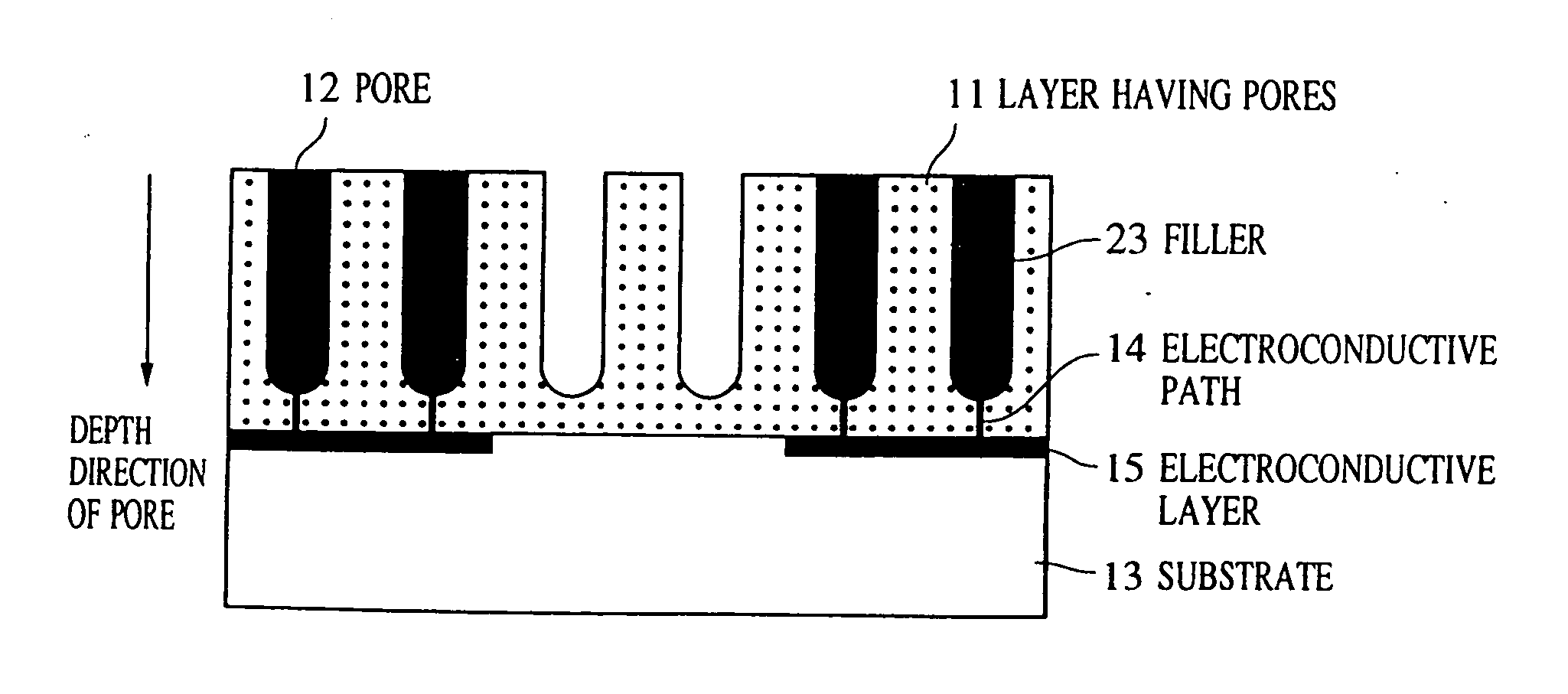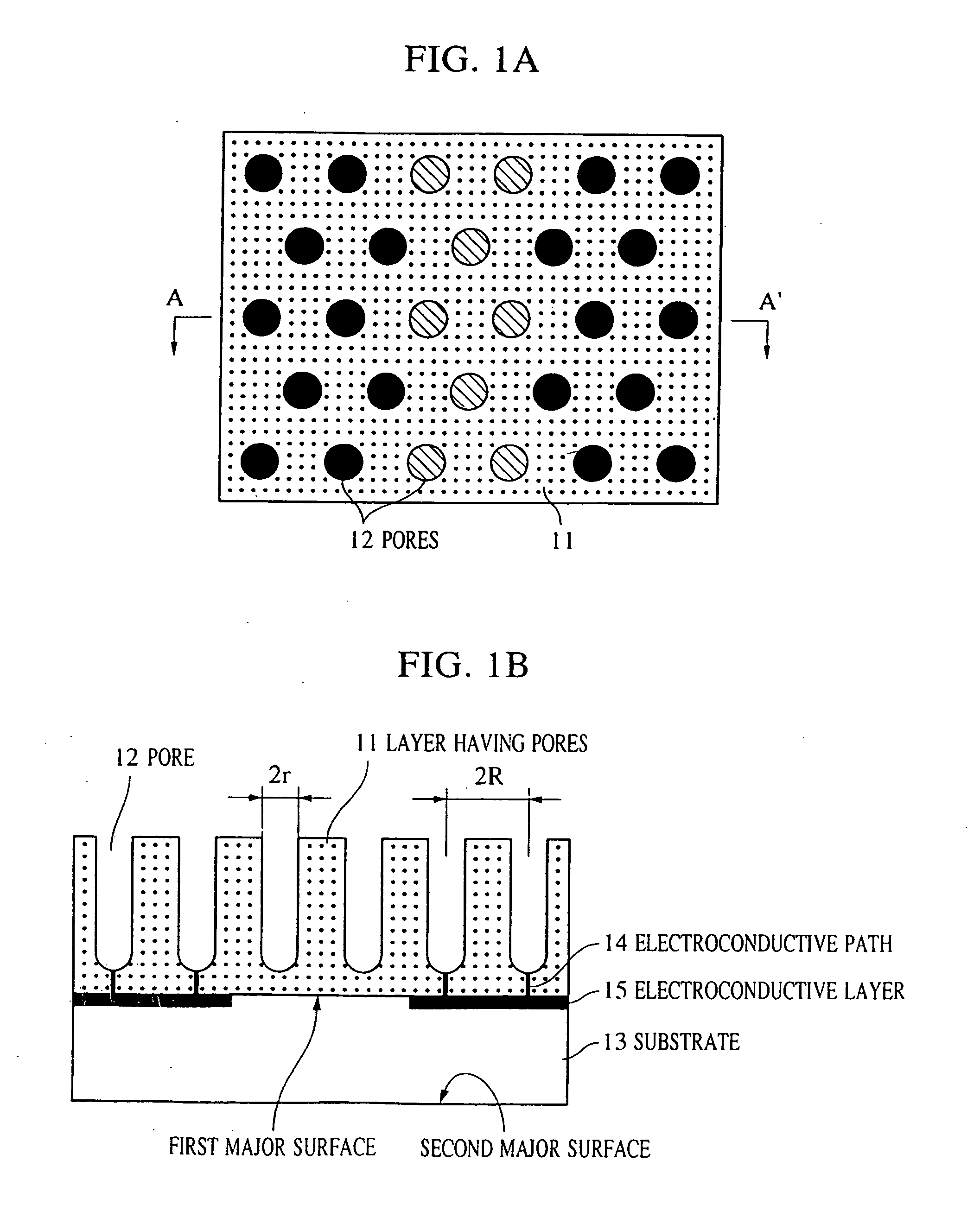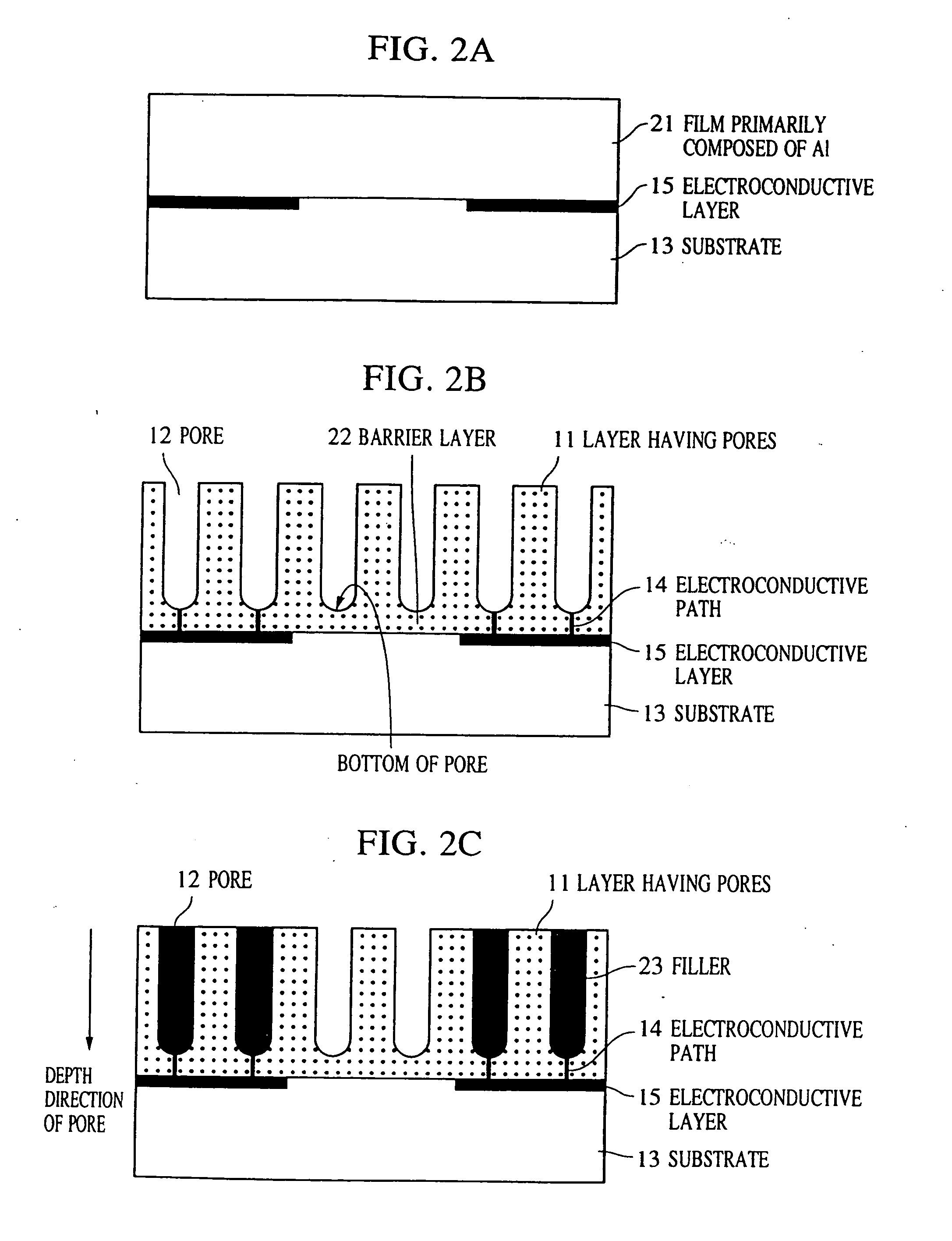Structure having pores, device using the same, and manufacturing methods therefor
a technology of pores and pores, applied in the direction of filtration separation, separation processes, instruments, etc., can solve the problems of low production yield, limited application and shape, and high cost of apparatuses therefor, and achieve the effect of a new and effective minute structur
- Summary
- Abstract
- Description
- Claims
- Application Information
AI Technical Summary
Benefits of technology
Problems solved by technology
Method used
Image
Examples
example 1
[0103] In this example, electrodeposition and the shapes of pores when aluminum nanohole layers are formed using various electroconductive layers will be described with reference to FIGS. 2A to 2C. Seven samples were made. In each sample, materials used to make the electroconductive films 15 are different from each other.
a) Formation of Electroconductive Layer 15 and Al Film 21
[0104] A resist (Hitachi Chemical Co., Ltd., RD-2000N) 1 μm thick was formed by spin-coating on a quartz substrate 13, and a line 10 μm wide was then exposed using a mask and developed. Subsequently, an electroconductive film 100 nm thick was formed by RF sputtering. As a material for the electroconductive films, Ti, Zr, Hf, Nb, Ta, Mo, and W were respectively used to each sample. The conditions for film formation were set so that the pressure in an Ar atmosphere was 30 mTorr, and the RF power was 500 W. By peeling the resist using a lift-off method, a 10 μm-wide electroconductive layer 15 was formed.
[0105]...
example 2
[0117] In this example, an anodized alumina nanohole layer was formed in a manner similar to that in Example 1.
[0118] In this example, a substrate 13 was a quartz substrate, and W was sputtered on the substrate 13 so as to be 100 nm thick and was then patterned by a lift-off method. Anodization was performed in a solution of oxalic acid at a voltage of 40 V at a bath temperature of 10° C. and was completed 10 minutes after passing the point C in FIG. 4 at which the anodizing current was sufficiently low. Similarly to Example 1, a pore-widening treatment was performed in a solution of 5 percent by weight of phosphoric acid for 40 minutes.
[0119] The sample and a counter electrode made of platinum were immersed in an electrolyte composed of cobalt sulfate at a concentration of 0.5 M and copper sulfate at a concentration of 0.005 M, and an alternating voltage of 5 V at 50 Hz was applied between the sample and the counter electrode, whereby nuclei of an alloy composed of cobalt and cop...
example 3
[0123] In this example, formation of an alumina nanohole layer provided with a patterned electroconductive layer 15 composed of Nb formed on a quartz substrate 13 and infiltration of an oxide in pores 12 were performed.
[0124] On the quartz substrate 13 provided with the 100 nm-thick patterned electroconductive layer 15 composed of Nb, a 5 μm-thick Al film 21 was formed (FIG. 2A).
[0125] Next, recesses arranged in the form of a honeycomb (a hexagonal grating) were formed on the surface of the Al film 21 by lithography. The space between recesses was set to be 300 nm.
[0126] Subsequently, by performing anodization in a manner similar to that in Example 1, pores 12 (nanoholes) were formed above the substrate 13. In the anodization, a solution of phosphoric acid at a concentration of 0.3 M was used as an electrolyte, the voltage was set to be 140 V, and the completion of anodization was set to be at a time sufficiently long after a decrease in current at the point C in FIG. 4. A pore-w...
PUM
 Login to View More
Login to View More Abstract
Description
Claims
Application Information
 Login to View More
Login to View More - R&D
- Intellectual Property
- Life Sciences
- Materials
- Tech Scout
- Unparalleled Data Quality
- Higher Quality Content
- 60% Fewer Hallucinations
Browse by: Latest US Patents, China's latest patents, Technical Efficacy Thesaurus, Application Domain, Technology Topic, Popular Technical Reports.
© 2025 PatSnap. All rights reserved.Legal|Privacy policy|Modern Slavery Act Transparency Statement|Sitemap|About US| Contact US: help@patsnap.com



